The African country of Botswana, home of Chobe Game Lodge in the national park of the same name, is renowned for its vast natural landscapes home to an abundance of wildlife. Tight controls over this designated national park has ensured excellent game viewing of wild animals in their natural habitat.
Chobe National Park is the largest park in Botswana. It covers 11,000 square kilometres extending to the edge of the Chobe River the natural border between Botswana and Namibia. Chobe Game Lodge offers five-star accommodation and has the distinction of being the only lodge inside this game park. Perfectly placed on a bank of the Chobe River guests can enjoy stunning views across the water from the rooms, restaurants and lounges.

Lounge Area at Chobe Game Lodge in Chobe National Park, Botswana
Guests at the lodge have the choice of game drives in 4WD luxury jeeps or boat trips along the Chobe River. As the lodge is inside the park their vehicles are out and about before the gates open to the vehicles from the other lodges. This early hour is the best time to view the animals that include huge herds of elephants and a large number of lions. The latter can often be seen on the hunt at this time. Numerous elephants and large packs of baboons come down to the river’s edge to quench their thirst at the start of the day – but not together. As one species leaves another will take its place. An ever changing tableau of animals. All keeping a wary eye on the water in case a crocodile may be lurking there.

A Nile Crocodile by the Chobe River in the Chobe National Park in Botswana
Who for
Mainly couples, singles and small groups. It can also accommodate families and private conferences
Accommodation
Sheltered under a canopy of mahogany trees Chobe Game Lodge offers a total of forty-four beautiful Moroccan style rooms. All the rooms are river-facing and air-conditioned and fitted with a ceiling fan. They also all feature a complimentary mini-bar, en-suite bathroom and private terrace. Forty newly rebuilt and decorated standard rooms (standard in name only) have been expanded in size and lead onto a spacious terrace facing the Chobe River. Included
are two fully wheelchair accessible rooms. Inside the rooms are all the amenities and comforts you would expect from a luxury safari lodge including a complimentary mini-bar, telephone and free WiFi .The en-suite bathrooms include a large bath and separate shower. The standard family room has two bedrooms, a shared bathroom and a river-facing patio.
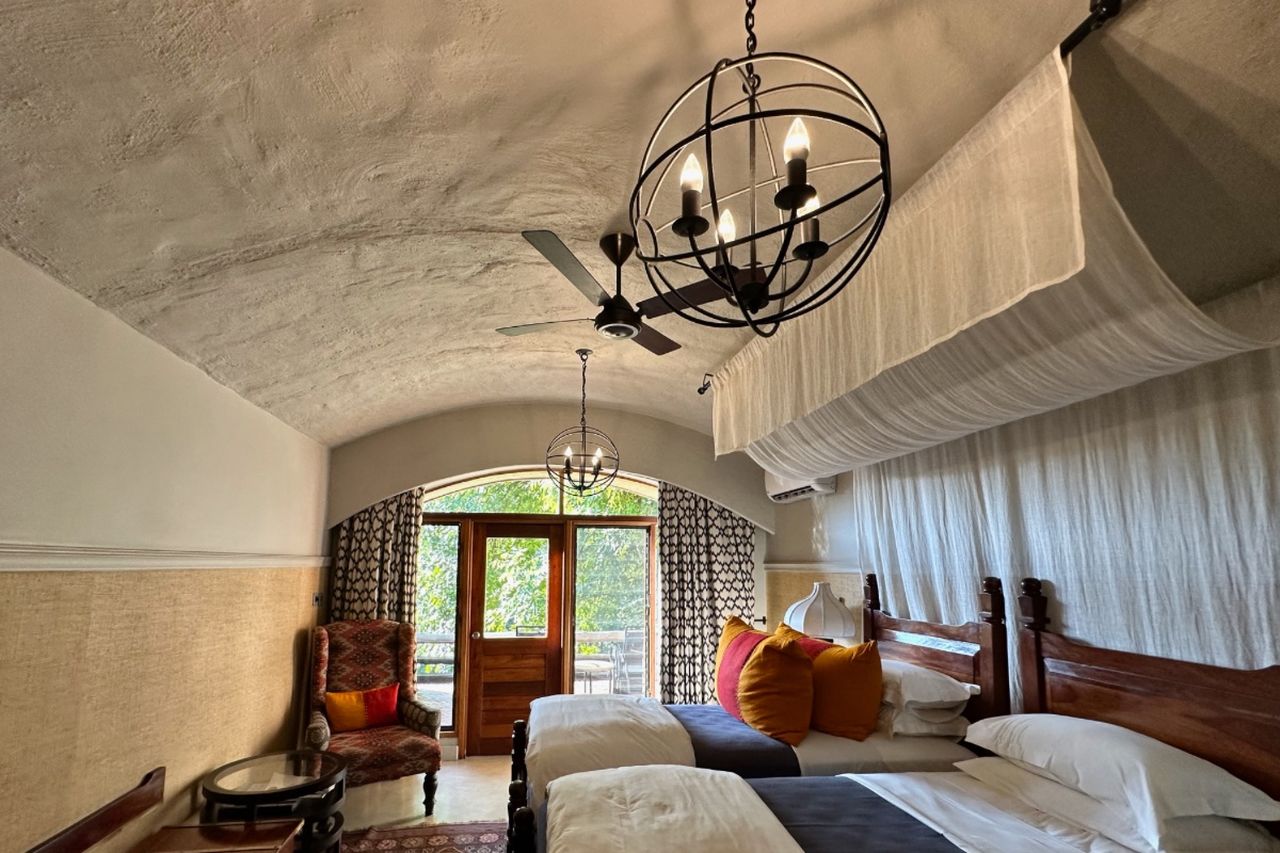
Standard Room at Chobe Game Lodge in Chobe National Park in Botswana
Newly introduced triple rooms, ideal for families, are located in the main area of the lodge. These rooms, featuring two bathrooms, a more private terrace and a lounge area that can be converted into a bedroom with a single bed, are ideal for families. For guests looking for exclusivity there are also four river-view suites. Each suite has a private infinity plunge pool and a separate lounge area as well as all the amenities of the standard rooms. The luxury family suite is only available for families with children over the age of six. Finally, the honeymoon suite found in the most private location in the lodge. It is similar in layout to the family suites featuring an open-plan lounge and spacious bedroom with a king-sized bed.

Infinity Plunge Pool in a Suite at the Chobe Game Lodge, Chobe National Park, Botswana
Food and Drink
Inside and outside dining is available here from the grassy space where a temporary breakfast restaurant is set up to inside and outside dining areas and tables dotted along the wooden board walk. Private dining can also be organised in the suites. There are also two complimentary bars in the main building.
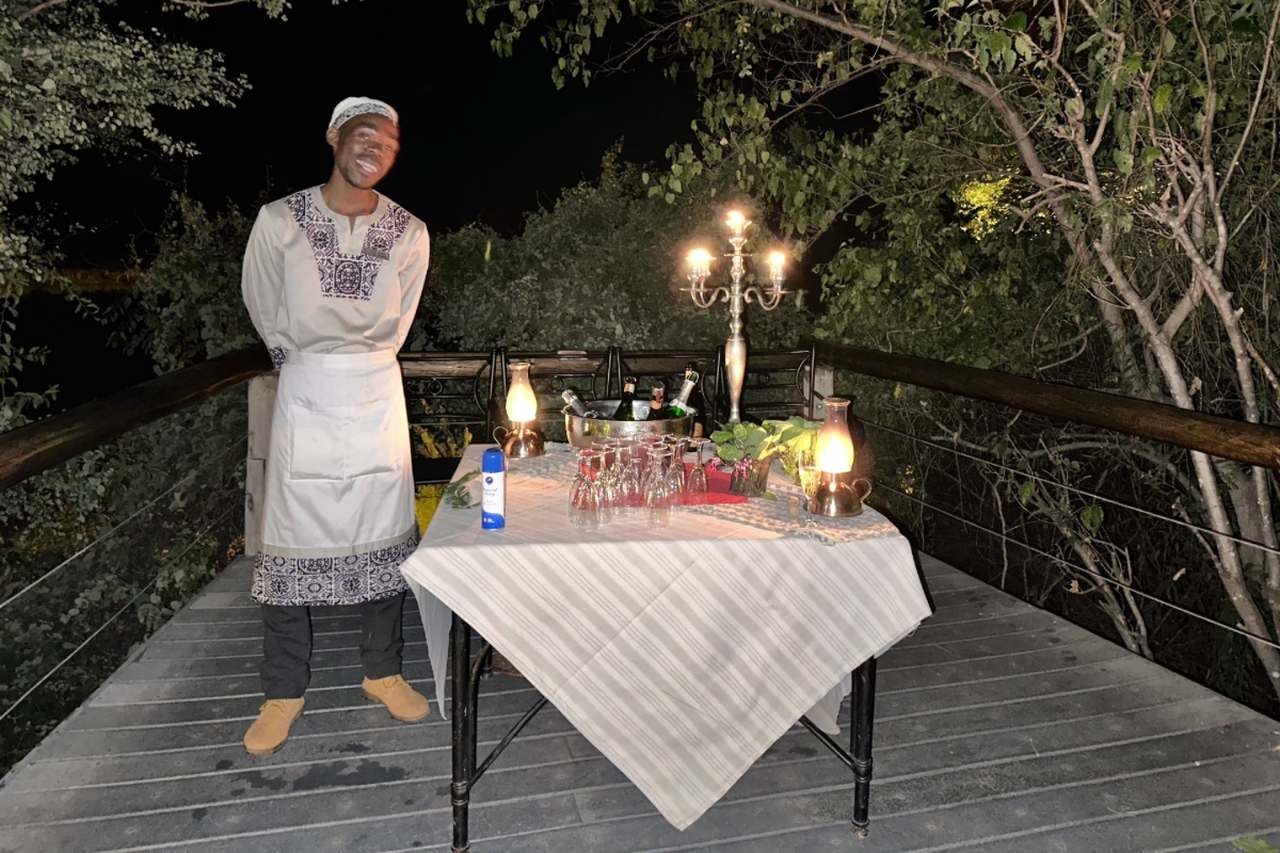
Outdoor Dining at the Chobe Game Lodge in the Chobe National Park, Botswana
Facilities
Chobe River is the main attraction at this beautiful lodge and a long boardwalk ensures all guests can take full advantage of this natural facility. Strolling along the boardwalk or relaxing in the seating provided an opportunity for game viewing without the need for jeeps or boats. This remarkable facility, linking a series of viewing platforms and small dining areas, ensures the river views are accessible to all guests including wheelchair users.
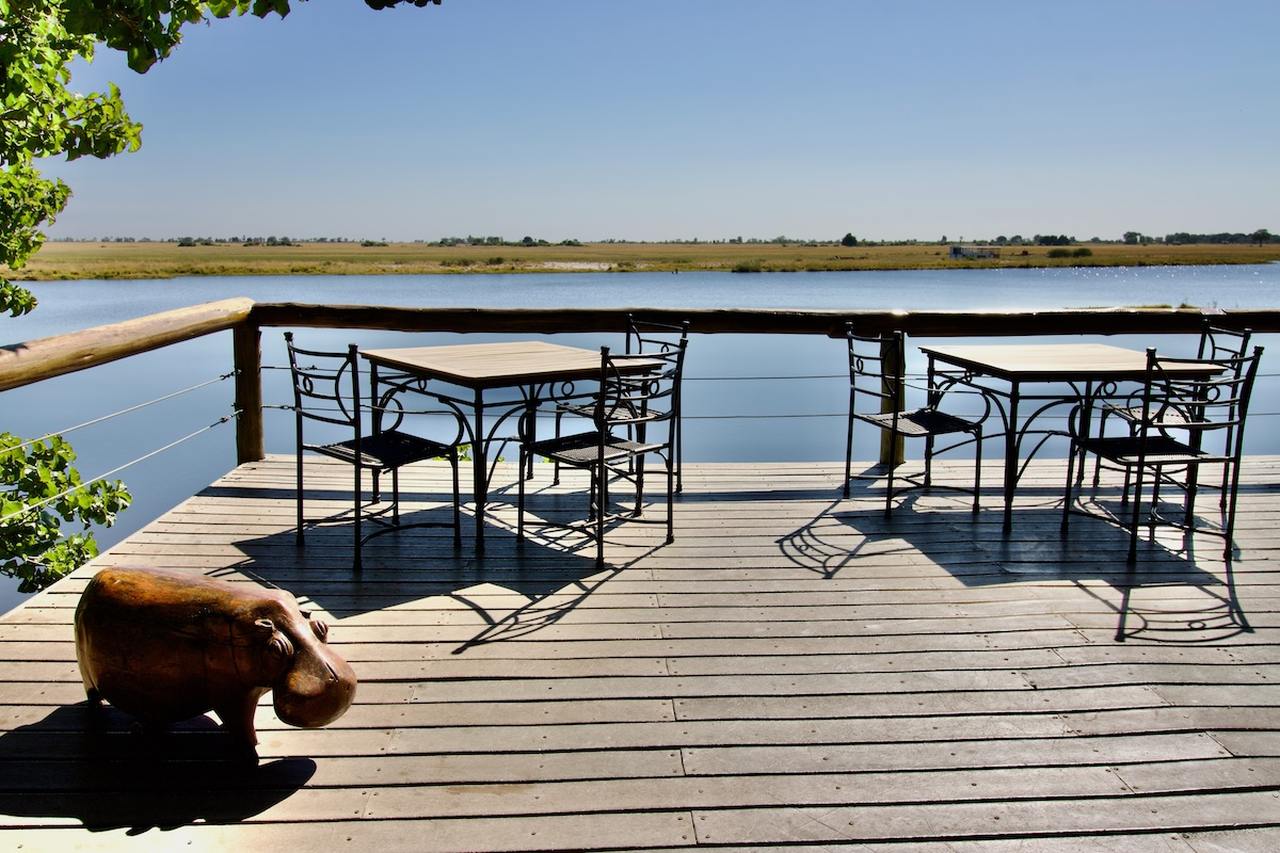
Viewing Platform on the Boardwalk at Chobe Game Lodge in the Chobe National Park, Botswana
Chobe Game Lodge boasts a gym for their more active guests make use of the downtime between game drives. Others may prefer the more leisurely activities of relaxing by the swimming pool, enjoying a massage in the spa or perusing the well-stocked shop. Modern Conference facilities are available for corporate guests including WiFi throughout the lodge and access to Kasane, the local town.

The Shop at Chobe Game Lodge in Chobe National Park, Botswana
Activities
Game watching is the main activity at the Chobe Game Lodge which has a fleet of luxury jeeps and several electric boats. Guests have the choice of land or water based safaris. Land safaris take place early morning and late afternoon. Thousands of elephants, large prides of lions, numerous antelopes and many other species of wildlife live in the Chobe National Park and are most active at these times.

A Pride of Lions in Chobe National Park, Botswana
Sunrise and sunset cruises take place at the appropriate times here. The lodge’s comfortable electric boats glide across the still waters as guests drink in the spectacle of the many species of wildlife that come down to the water’s edge to drink. These include huge herds of elephants, large groups of baboons and the occasional solitary hippo may rouse itself from slumbering in a riverside pool.
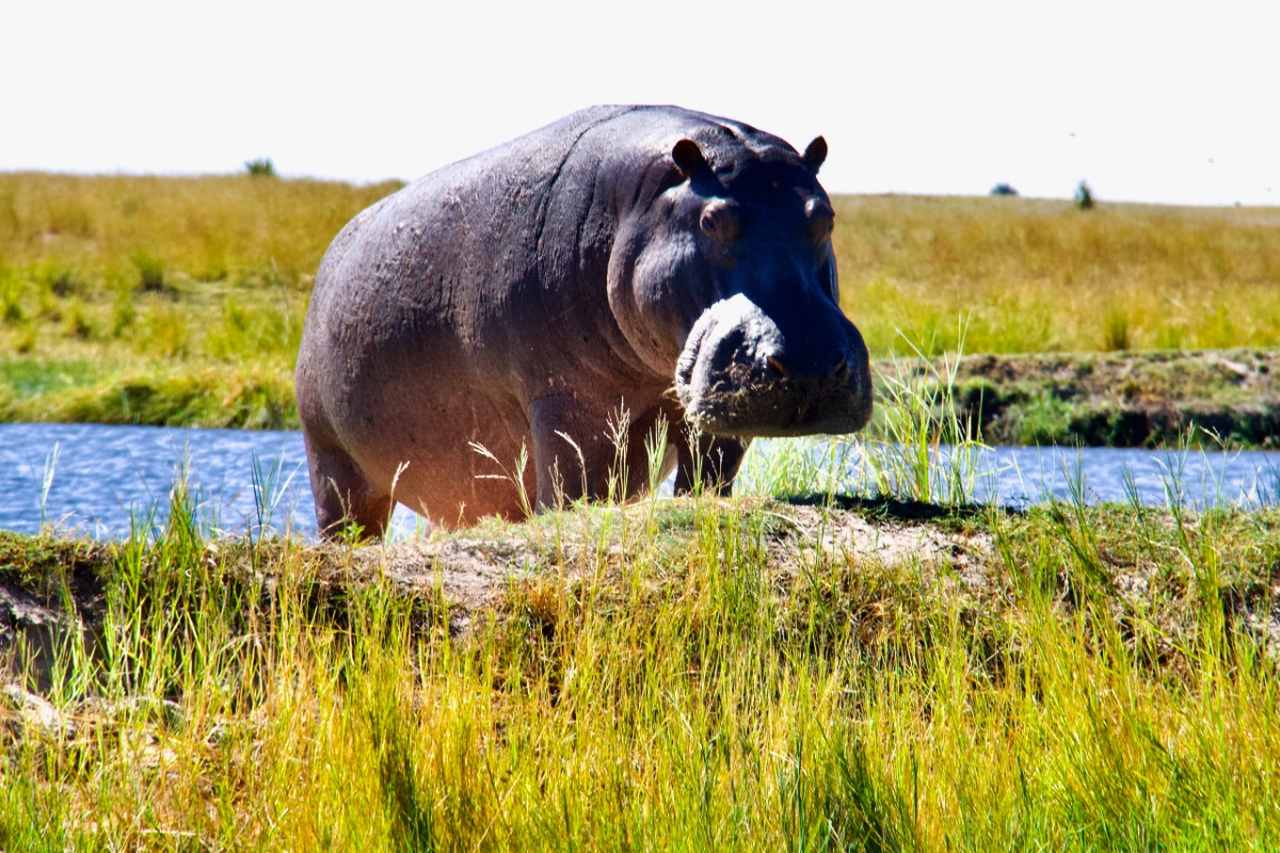
Hippo by the Chobe River in the Chobe National Park, Botswana
Sustainability is high on the agenda at Chobe Game Lodge. It has been working to a detailed plan established as early as 2013. Eco Tours are available for guests interested in seeing what goes on behind the scenes and sustainable tourism initiatives are implemented here. Money-saving procedures that have been implemented included a petrol station so vehicles do not have to make frequent journeys into the local town to fill up with petrol. Aspiring to a fleet of electric luxury jeeps, developed and maintained in the lodge’s workshops, they are already using electric boats for river cruising.
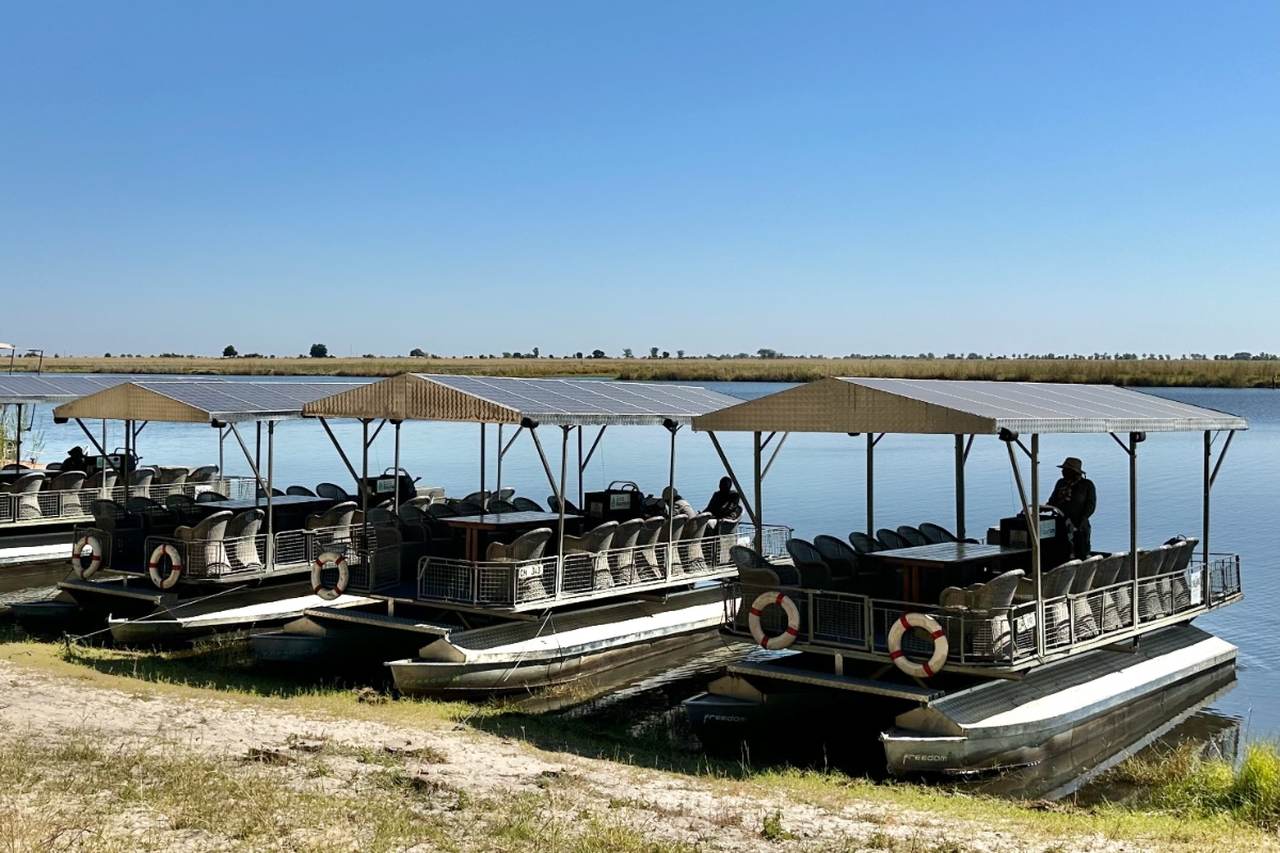
Electric Boats at Chobe Game Lodge in Chobe National Park, Botswana
Guests on the four night package have the option of a day excursion to Victoria Falls (extra charge).
How much
Prices start at $640 for a one night stay for two people in a standard room. Special prices are offered for a minimum stay of 4 nights.
What’s nearby?
The town of Kasane is a 45 minute journey from Chobe Game Lodge. Kasane has an airport which means this is a good starting point for a safari holiday and convenient for flying to other lodges in Botswana. Desert and Delta Safaris offer a variety of interesting itineraries in Botswana.
VERDICT:
Chobe Game Lodge in Chobe National Park, Botwana, is perfect for that extra special safari in a country that offers exceptional game viewing
The post Chobe Game Lodge review in Chobe National Park, Botswana appeared first on The Travel Magazine.



























